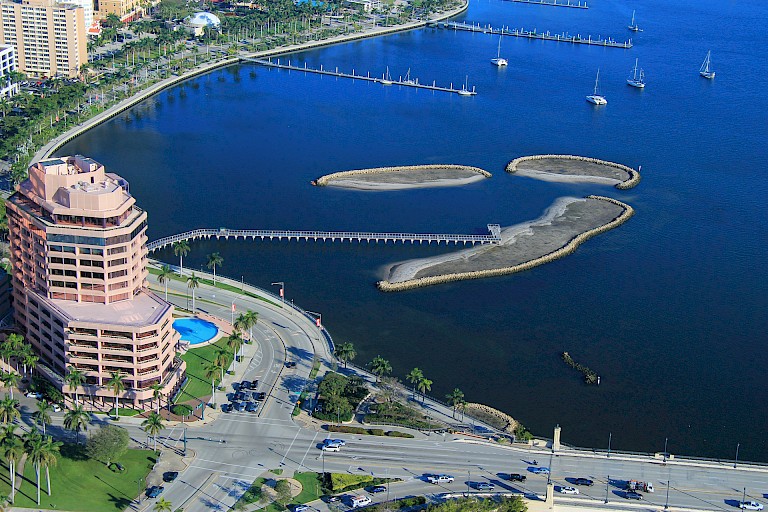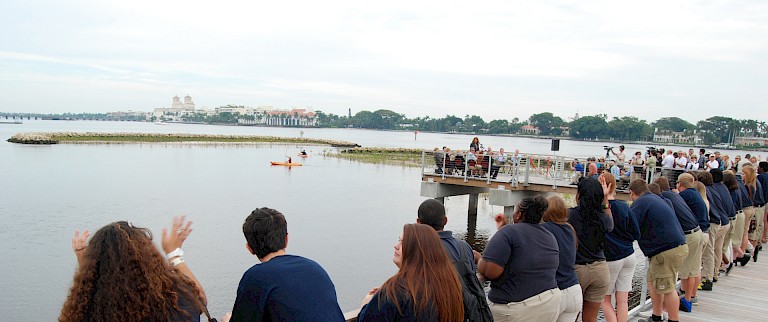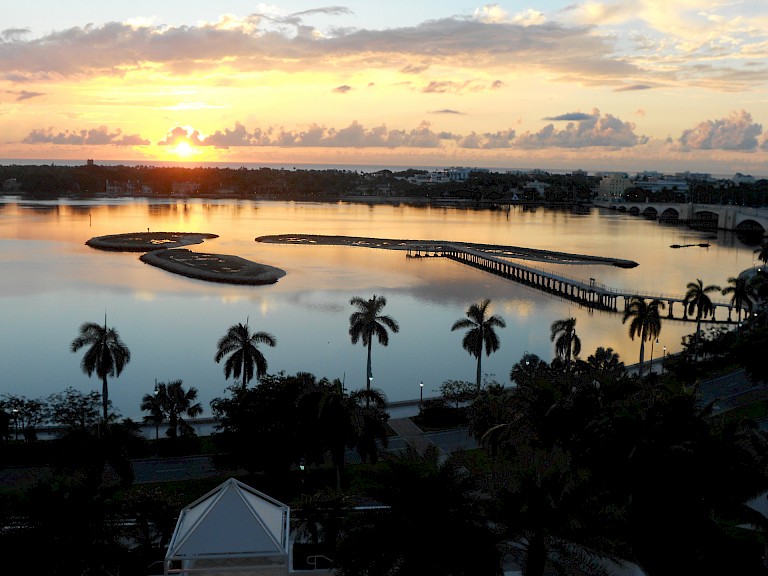



These environmental interventions provide natural filtration—each oyster filters 40-50 gallons of water a day—and improve water quality. The project also comprises a 556-foot elevated boardwalk, a 16-by-16 foot observation deck, and an educational kiosk for public access.
“For me, the most compelling aspects of the South Cove Regeneration project are questions it raises about commonly held assumptions regarding the capability and purpose of public art as well as the role of an artist,” says lead artist Michael Singer. “Some would ask ‘Where’s the art?’ when one considers the primary task of this project is the positive reinvigoration of a natural water system.”
Part of this project’s excellence is precisely the fact that it broadens the definition of public art. “This project advances community interactions and understanding, as well as manifests the missions of ecological groups and a governmental environmental resource management agency,” says Singer. “It helps to replenish the South Cove of the West Palm Beach Intracoastal Waterway, which has suffered from the construction of a waterfront roadway, pollution, and loss of critical natural habitat and wildlife.”
In addition to environmental regeneration, this project is notable for its community and governmental participation: residents of Trump Tower, a luxury co-op building overlooking the South Cove site, tried to terminate the project by engaging in a costly lawsuit that isolated them from the larger community. Not only did their action fail, notes Singer, the publicity fomented community support for the project. The lawsuit brought regional attention to the project, and “resulted in a large community campaign to enlighten the public about the project and the valuable benefits of this multifunctional water cleansing, habitat enhancing, accessible new public place located in an unexpected urban area.”
The project has helped to expand the public’s understanding of the power, possibility, and very nature of public art. Concludes Singer: “The South Cove Regeneration project demonstrates public art’s ability to engage in multi-functional problem solving, demonstrate crucial environmental regeneration, and meet infrastructure needs as well as providing community awareness.”
All copyright belongs to Shanghai Academy of Fine Arts, Shanghai University.



